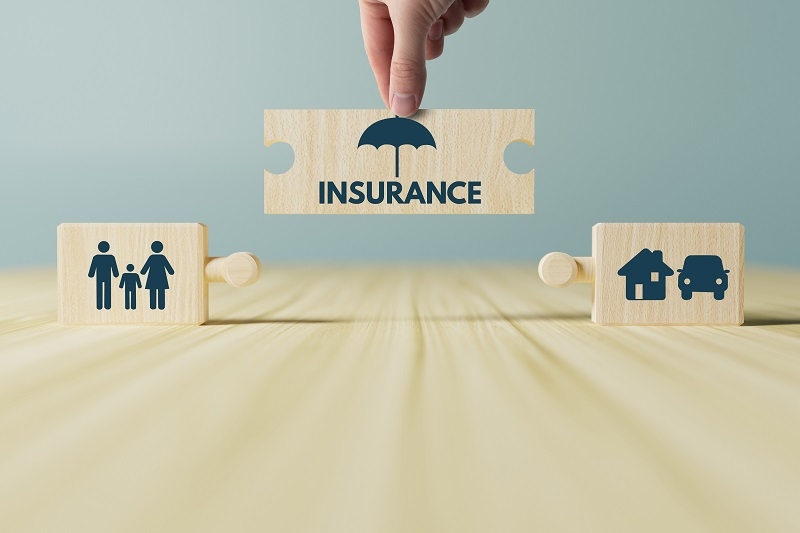
Life is beset with uncertainties, and even the most carefully made plans can be undermined by an accident, a lawsuit, or an adverse twist of circumstances. If your regular insurance policies prove insufficient in such cases, you could be left vulnerable to hefty financial obligations. That's where umbrella insurance coverage becomes an essential safety net. In this blog, we’ll explore what umbrella insurance is, umbrella insurance coverage limits explained, who needs it, how much coverage is enough, the best umbrella insurance coverage for homeowners, and why combining it with your existing policies makes financial sense.
Basically, umbrella insurance protection is a type of personal liability protection that protects you after your standard policies—home, car, or renters insurance, for example—reach their payout limit. If you get sued or are found liable for damages in a higher amount than those limits, umbrella insurance pays the difference, up to your policy amount.
For example, let’s say you’re involved in a major car accident and found liable for $1.5 million in damages. If your auto insurance policy only covers up to $500,000, an umbrella policy would step in to cover the additional $1 million—potentially saving your assets, savings, and future income from legal claims.
We are a litigious society with more lawsuits and often expensive lawsuits. A single liability claim can wipe out your savings or force you to sell your assets. That's the reason you need umbrella insurance coverage. It's peace of mind knowing that you're protected from devastating financial losses.
While most people think this type of coverage is for the wealthy, the truth is, it's a smart move for anyone who has assets to protect. If you own a home, have investments, or even a modest savings account, umbrella insurance can help protect your financial future.
One of the first things to understand when buying this type of policy is how umbrella insurance policy limits work. The policies typically start at $1 million in coverage and go up in $1 million increments. That might sound like enough, but in the event of a catastrophic accident or lawsuit, legal fees, medical bills, and compensation costs can quickly reach into the millions.
For homeowners, umbrella policies offer an essential extra layer of security. Slip-and-fall accidents, dog bites, pool accidents, or even feuds with neighbors can lead to costly legal actions. That is why the best umbrella insurance for homeowners is a policy that supplements and augments your existing homeowner's policy well.
A smart financial strategy is to combine umbrella insurance coverage with auto insurance for seamless protection. Car accidents are one of the most common liability exposures, and standard auto policies have payout caps. If you’re involved in a serious accident, medical and legal costs can easily exceed your auto policy limits.
By bundling or combining your umbrella insurance with your auto insurance, you can be protected for high-dollar claims arising from automobile accidents. And most insurance companies offer multi-policy discounts when you bundle, so it is less expensive to be well-protected.
For example, if you cause an accident that injures several people for the long term, you could be looking at claims in the millions. Having umbrella insurance coverage in force—linked directly to your car policy—can fend off financial disaster.

So, what’s the price of peace of mind? Thankfully, umbrella insurance coverage cost estimates show that it’s surprisingly affordable, especially given the protection it offers. On average, a $1 million umbrella policy costs between $150 and $300 annually. Additional millions typically cost less per million—for instance, an extra $1 million might cost only $75 more per year.
Several factors influence umbrella insurance coverage cost estimates, including:
Despite these variables, umbrella insurance is one of the least expensive ways of providing substantial liability coverage for the majority of families.
Before you purchase a policy, you need to be aware of umbrella insurance coverage eligibility. Most companies require you to meet some conditions, specifically on liability limits on your home and auto policies.
You'll typically need:
If you own multiple properties, rentals, or have teenage drivers in the home, you may be a higher risk. In that case, the insurer will want to see more documentation or higher premiums. But eligibility is not generally difficult for the typical consumer to qualify.
This is the million-dollar question, sometimes. To determine how much protection is sufficient, do the following:
Calculate your net worth – Add up home equity, retirement accounts, investment accounts, savings, and other valuable assets.
Evaluate your risk exposure – Do you frequently entertain? Own rental properties? Have teenage drivers? Use social media actively (libel risk)? The higher the risk, the more coverage you may need.
Consider future earnings – Future earnings can also be ordered in litigation by courts, so don't ignore your future earning potential.
Take expert advice – An insurance consultant can look at your situation and recommend an ideal cover level.
Most financial advisors suggest purchasing umbrella insurance coverage that is equal to or slightly more than your net worth. So, if you have $1 million in assets, consider $1–2 million in coverage. Those with high incomes or complex portfolios can go even higher—$5 million or more.
Make sure to check your existing liability limits, calculate how much coverage you need, and see how to combine umbrella insurance coverage with auto and home policies for total protection. With umbrella insurance coverage price estimates being quite reasonable, and umbrella insurance coverage eligibility well within the grasp of most, there is little reason not to take the extra step. In short, umbrella insurance is the safety net you never knew you needed—until you really need it.
This content was created by AI